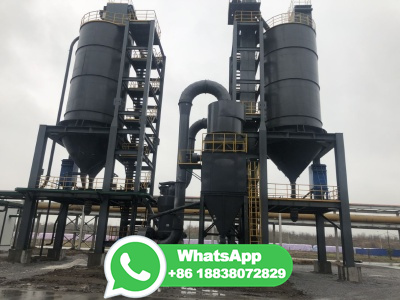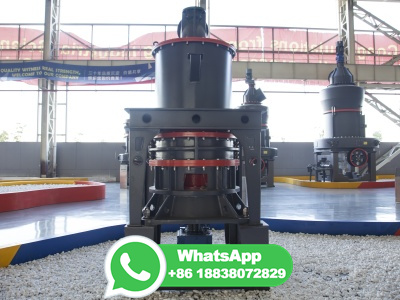
WEBJul 23, 2023 · The transformation from traditional iron and steelmaking technologies to green H2based new technologies will require an improvement in the quality and purity of iron ore burden materials. Iron ore pellets are essential inputs for producing direct reduced iron (DRI), but the conventional binders, used in iron ore pelletizing, introduce .
WhatsApp: +86 18203695377
WEBThe incremental iron ore demand of about 440 mt from increased DRI production could be met, assuming adequate replacement of depleted reserves. However, from the qualitative perspective, there is a potentially serious problem. ... Conversely, the quality of seaborne iron ore pellet feed and concentrates over the same period has remained rather ...
WhatsApp: +86 18203695377
WEBOct 3, 2015 · Narcin et al. used Turkish lignite for reduction of iron ore pellets. They reached 93 % average metallization degree at 1000 °C and 90min residence time. Man et ... High reactivity of lignite char make it ideal for DRI process. One method of char generation is pyrolysis of lignite. Lowtemperature pyrolysis of coal is regarded as an .
WhatsApp: +86 18203695377
WEBMay 20, 2022 · HBI is the product of reducing iron ore with natural gas. This is called the direct reduction process and is an environmentallyfriendly production process; a DRI plant uses natural gas which is more environmentally sound than coke. The reduction process takes place in the reduction tower. A tower is the heart of the plant.
WhatsApp: +86 18203695377
WEBNov 1, 2017 · The effects of biomass addition on iron ore pellets reduction and consequent reduction kinetics in simulated biomassderived syngas atmosphere were investigated. ... the understanding of the reduction behavior of iron ore/biomass composite pellets in the DRI route would be beneficial to the industrial implementation in producing DRI by using ...
WhatsApp: +86 18203695377
WEBAug 12, 2020 · This study aims to clarify the formation mechanism of pores in pellets, analyze the pore microstructure of pellets by advanced characterization methods and establish a reliability analysis between different characterization methods, which may provide new insights into the field of iron ore pellets.
WhatsApp: +86 18203695377
WEBJun 27, 2018 · Direct reduction converts solid iron ore pellets into socalled direct reduced iron (DRI), using a mixture of CO and H 2 produced by reforming natural gas. Due to independence from coke and coal imports, sizeable units to meet demand, reduced investment costs, and reduced construction time [ 3 ], direct reduction units are .
WhatsApp: +86 18203695377
WEBFeb 12, 2022 · Abstract. Iron ore, pellets, and sinter were reduced with hydrogen at 800 °C to understand the degree of reduction and the mineralogical aspects. The weight loss of goethite and limonite iron ore ...
WhatsApp: +86 18203695377
WEBNov 1, 2018 · For iron ore pellet feed preparation from fine iron ore concentrates, at sizes below 1. mm and generally at a high moisture content ranging between 7 % and 12 %, HPGR. has proven to be successful ...
WhatsApp: +86 18203695377
WEBDirect Reduced Iron (DRI) is the product of the direct reduction of iron ore in the solid state by carbon monoxide and hydrogen derived from natural gas or coal. See more information about the production of DRI . Most gasbased direct reduction plants are part of integrated steel minimills, loed adjacent to the electric arc furnace (EAF ...
WhatsApp: +86 18203695377
WEBAug 9, 2022 · DRIelectric arc furnace (EAF) technology is proven and in use today. However, it requires highquality iron ore (DRgrade) with iron (Fe) content of 67% and above, which has lower levels of impurities. DRgrade iron ore currently makes up only about 4% of global iron ore supply. Some fossil fuelbased steelmaking supply chain .
WhatsApp: +86 18203695377
WEBNov 25, 2022 · Iron ore pellet reduction experiments were performed with pure hydrogen (H2) and mixtures with carbon monoxide (CO) at different ratios. For direct reduction processes that switch dynamically between reformed natural gas and hydrogen as the reductant, it is important to understand the effects of the transition on the oxide reduction .
WhatsApp: +86 18203695377
WEBAug 1, 2022 · It has been demonstrated in the literature that iron ore pellets undergo dramatic volume swelling due to the crystal transformation during the reduction of Fe 2 O 3 → Fe 3 O 4 → FeO [34], and that rapid, adequate and unrestricted reduction of iron oxide is responsible for the large RSI of fired pellets with natural basicity (R = ).
WhatsApp: +86 18203695377
WEBMar 4, 2024 · The iron and steel manufacturing sector directly accounts for 7–9% of global CO2 emissions. Raw material preparation, such as iron ore sintering, pelletizing, and cock making, is the major CO2 emitter. As climate change becomes a bigger concern, steel manufacturers need to lower CO2 emissions without hindering efficiency or increasing .
WhatsApp: +86 18203695377
WEBJul 15, 2021 · The reduction behaviour of high flux hardened iron ore pellets of basicity 2, 4, 6 and 8 (Basicity = CaO/SiO 2) reduced at temperature (900–1050 °C) were examined and reported kinetic model [(1 − α) (−1/3) − 1] 2 = kt was found to be the best fit model with the present experimental data. Activation energy was calculated based on .
WhatsApp: +86 18203695377
WEBNov 25, 2022 · Abstract. Iron ore pellet reduction experiments were performed with pure hydrogen (H 2) and mixtures with carbon monoxide (CO) at different direct reduction processes that switch dynamically between reformed natural gas and hydrogen as the reductant, it is important to understand the effects of the transition on the oxide .
WhatsApp: +86 18203695377
WEBFeb 14, 2017 · The main raw materials for the production of DRI by the rotary kiln process are (i) sized graded iron ore or iron ore pellets, (ii) noncoking coal, and (iii) dolomite in small quantities to scavenge the sulphur. Iron ore of the right quality is the basic input for the coal based direct reduction process.
WhatsApp: +86 18203695377
WEBApr 9, 2017 · Midrex is an ironmaking process, developed for the production of direct reduced iron (DRI). It is a gasbased shaft furnace process is a solid state reduction process which reduces iron ore pellets or lump ore into DRI without their melting using reducing gas generally formed from natural gas.
WhatsApp: +86 18203695377
WEBApr 14, 2015 · Green iron oxide pellets are indurated with thermal treatment in pelletizing plant to achieve sufficient mechanical properties and to be used in ironsteel industry. In the first stage, the ...
WhatsApp: +86 18203695377
WEBIn the direct reduction process, the reducing agent converts the iron ore to elemental iron directly. The final product is directly reduced iron (DRI) including matrix elements from the ore. Typical feed gases for direct reduction are either hydrogen or natural gas with methane (CH 4) as the main constituent.
WhatsApp: +86 18203695377
WEBApr 22, 2024 · Moreover, the minimum strength requirement for iron ore pellets for blast furnaces (BF) and direct reduced iron (DRI) process is 250 kg/ pellet, represented by the dotted line (b) in Fig. 9 . The threshold CCS value of the magnetite pellet was obtained at 1000 °C with 5 min RT and attained kg/ pellet.
WhatsApp: +86 18203695377
WEBDirectreduced iron (DRI), also called sponge iron, is produced from direct reduction of iron ore (in the form of lumps, pellets or fines) by a reducing gas produced from natural gas or coal. The reducing gas is a mixture majority of hydrogen (H2) and carbon monoxide (CO) which acts as reducing agent. This process of directly reducing the iron ...
WhatsApp: +86 18203695377